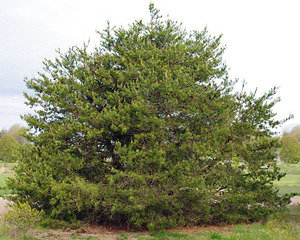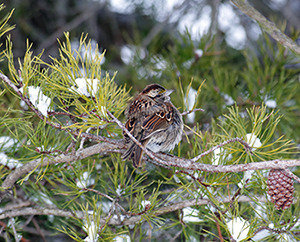





A tiny pine tree took root next to my mother-in-law's shed and established itself in a tight place where it would not thrive. When she pointed it out to me, the cute little stick with green needles was about 15 inches tall. That was in 1999.
It was a gentler time in the history of the Given family when Mom-mom and Pop-pop lived at the edge of the woods just beyond Seaford, Delaware near Woodland Ferry on the Nanticoke River.
Since the beautiful woods surrounded their back yard, opportunities for exploration abounded, and Pop-pop often went trooping back there in search of woodland treasures. He found a few dogwoods trapped in the understory and brought them out of bondage to live in the sun-dappled back yard near the garden.
The garden had strawberry plants that grew a bit leggy because the canopy of woods did not allow for sunshine except for in the middle of the day. That was okay because the strawberries nevertheless bore fruit enough for jams and jellies. We would often kneel down alongside of Mom-mom Given to help pick the fruit in springtime and would pull up weeds and tree seedlings of all sorts as we went.
The baby pines and oaks were adorable but could not stay in the strawberry bed, so we casually tossed them to the side without further thought. They were no larger than a finger.
On one such visit, Mom-mom (Lois Given) took me for a short walk around her peaceful, shady yard to show me an established young pine tree that had taken hold in a hidden place behind the shed. She advised me to dig it out. She knew my passion for gardening and for growing trees and thought the poor little evergreen would have a better chance at my place than in its accidental location.
How could I refuse? Of course I would adopt the tree! Lois gave me a bucket and a shovel, and I had at it, digging a circular trench and working the root ball up and out of the earth. Thanking my mother-in-law, I placed my precious little pine in the back of our van and rode home with my husband and children.
Even though I was a very busy stay-at-home mom at that time, I took special care to get that little pine tree planted so that it would not die of neglect in the bucket. Scouting out a place, it seemed a good idea to plant my little pine near a row of Eastern Red Cedars in the middle of the back yard. At that time, all of the trees in the yard were younger and smaller, giving the acre a sense of spaciousness.
The little pine recovered from the transplant and began to thrive. While it was still small, I gave it a lot of attention because it was a gift, and I wanted to keep it alive and healthy for Mom-mom's sake. Soon, the pine no longer needed attention; it had fully and firmly established itself in its new home and doubled in size. I could relax and go about my business knowing that my pine tree had taken to its new environment like a duck to water.

The cedars and pine grew very tall over the next decade. I began to learn more about Eastern Red Cedars but knew nothing about my pine until I asked about it in the Trees, Shrubs, and Conifers Forum here at Dave's Garden. Turns out, that little pine o' mine is a Pinus virginiana, or Virginia Pine.
Googling all I could about Virginia Pine, I discovered some amazing history about my adopted tree. The Gymnosperm Database website lists many ways in which the Cherokee Indians utilized this tree for medicinal purposes in the earlier days of our country. Also included at the site is a short list of the tallest Virginia Pines on record, with the largest one at 121 feet (37 meters) in height.
Another nice website that I found in my search for information is from the Fairfax County Public Schools in Virginia featuring an educational viewpoint that shows the relationship of Pinus virginiana to other plants and animals in the environment.
I have noticed in my own backyard environment that sparrows, bluejays, mockingbirds, and juncos all seem to love my pine. There are, no doubt, countless other varieties of birds and smaller creatures that continuously benefit from my pine tree.

Upon seeking information about my pine for the first time, I found that most of the websites spoke negatively of my tree in terms of its form and beauty, calling it "scrubby", "not showy", "untidy", and of "no winter interest".
I beg to differ!
Sure, my Virginia Pine grows as wide as it is tall, but what is unshowy about that? It has a beautiful conical form, albeit a fat conical form. It is admittedly untidy in the way the branches have irregular-sized spaces in between them, but what is unattractive about that? It allows more space for the sunlight to shine through so that I can watch little juncos and sparrows perch on its branches in wintertime.
After looking up websites and images of Virginia Pine, I believe that I have the most beautiful specimen on the East Coast, for the reasons mentioned above, but mostly for this reason: That pine o' mine was a gift from my mother-in-law, Lois Given, "Mom-mom", who passed away in 2009. Her beautiful spirit lives on in my memory, and her beautiful Virginia Pine tree will live in my yard all the days of my life.
Copyright © www.100flowers.win Botanic Garden All Rights Reserved